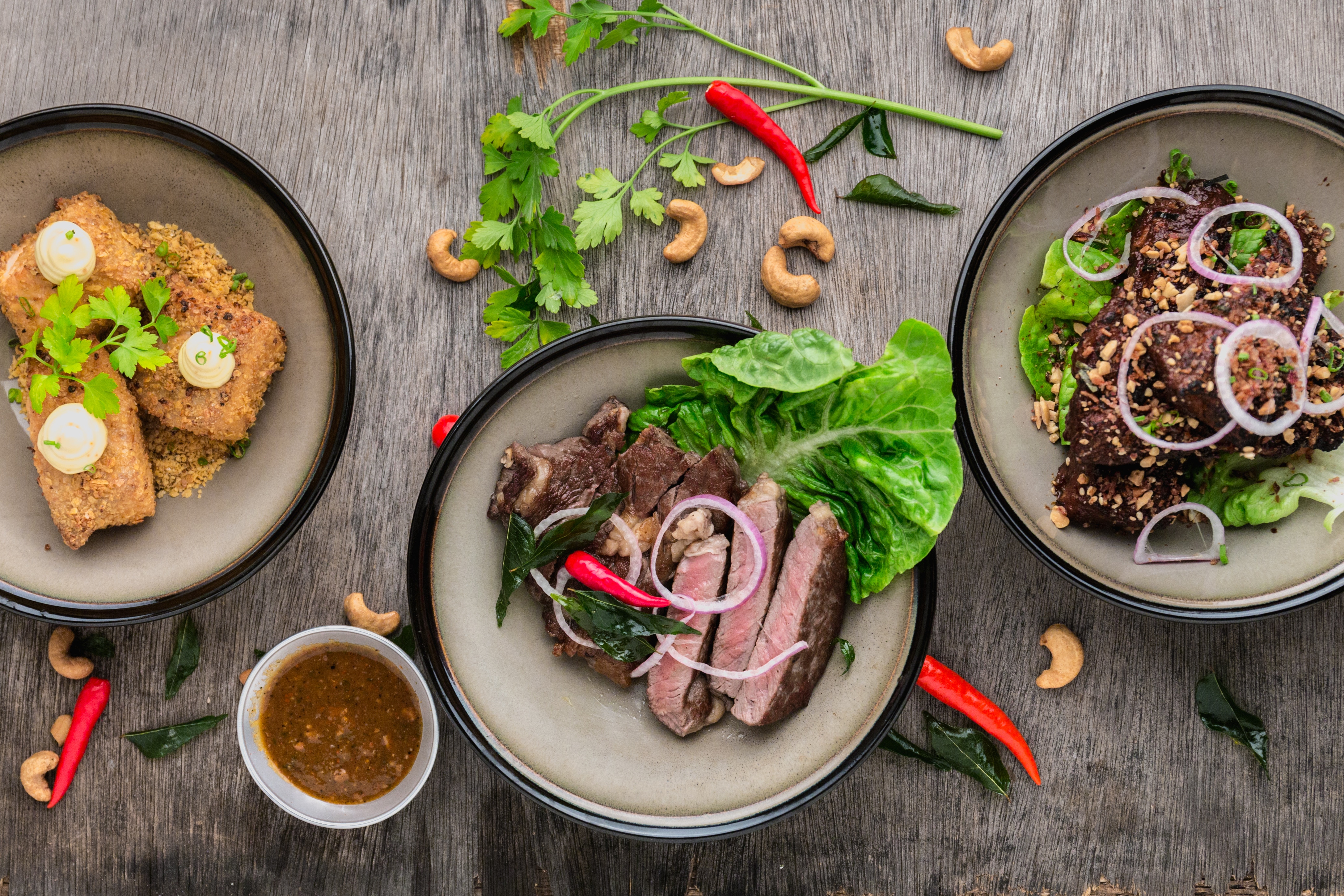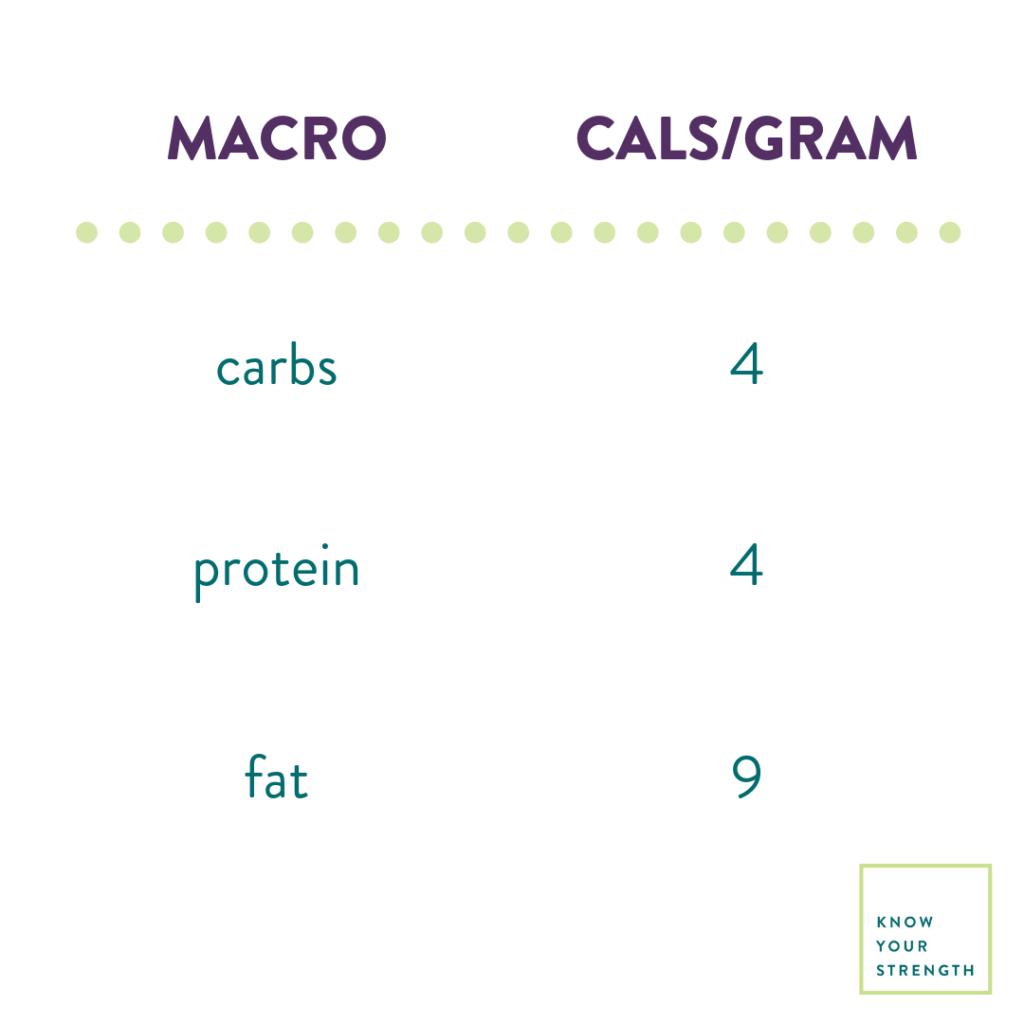
Macros, a.k.a. macronutrients, are the nutrients your body can’t live without: carbohydrates, protein, and fat. For optimal health, your body needs each of them in large amounts (hence “macro”). And when it comes to macros for weight loss in women, each macronutrient plays its own, vital role.
The 3 Macros for Weight Loss in Women: How Much You Need of Each and How to Balance Them for Healthy Fat Loss
Macro for Weight Loss #1: Carbs
Repeat after me: Carbs are not the enemy—even if you’re trying to lose weight. “Carbohydrates are the most important energy source for almost all human cells,” explains registered dietitian Mascha Davis, M.P.H., R.D.N., a spokesperson for the Academy of Nutrition and Dietetics.
Your body digests them quickly and turns them into sugar, or blood glucose, which you then store in your liver and muscles as glycogen. Together, blood glucose and glycogen fuel high-intensity exercise—the kind you need to burn fat and build metabolism-boosting muscle.
When it comes to macros for weight loss in women, carbs may also help you lose more weight by preventing stress eating, since they’re tied to your levels of the happy-maker neurotransmitter called serotonin (and, as a result, your mood).
Macro for Weight Loss #2: Protein
You know that protein is used to build and maintain your body’s lean muscle, but it does a whole lot more than that. “Protein makes up the enzymes that power chemical reactions in the body,” Davis says. “It also makes the hemoglobin that transports oxygen through the body.” And if oxygen doesn’t get where it needs to go, you can forget about having the energy to take the stairs, let alone power through an hour-long run.
Plus, when it comes to boosting your satiety levels so that you can feel full on fewer calories, protein rocks. (When you eat protein, your gut makes hormones that slow down the movement of food through your G.I. tract, meaning that you stay fuller, longer.) By slowing digestion, protein also slows the release of glucose into your bloodstream to prevent the blood sugar and insulin spikes that can create health issues, explains Alexandra Sowa, M.D., a New York City-based internal medicine physician and diplomate of the American Board of Obesity Medicine. Put all of this together and protein is a critical macro for fat loss.
RELATED: How to Lose Fat Without Losing Muscle
Macro for Weight Loss #3: Fat
Fat is the last, but not least, of the macros for weight loss in women. After all, if the keto diet has taught us anything, it’s that fat does not make you fat—even if fat does contain more calories, ounce per ounce, than the other macros.
Here’s the thing: Fat makes up cell membranes, promotes nerve and brain health, and increases the absorption of the fat-soluble vitamins A, D, E, and K, all of which are crucial to healthy weight-loss efforts. And while fat doesn’t trigger the exact same satiety-boosting hormones that protein does, it is relatively slow to digest, further stabilizing blood sugar levels and keeping cravings away.
RELATED: What You Need to Know About the Six Types of Body Fat

Macros for Weight Loss in Women: Here’s How You Count Macros to Lose Weight
As anyone who has ever tried a low-carb or high-protein diet knows, there are an endless array of ways to switch up macros for weight loss in women. But which one’s best? It depends on both who you ask and who you are. However, it’s a good idea for everyone to start with federal guidelines and tweak from there.
The National Academies of Sciences, Engineering, and Medicine says adults should try to get 45 to 65 percent of their cals from carbs, 10 to 35 percent of them from protein, and 20 to 35 percent of them from fat.
So, if you’re following a 1,600-calorie diet, which is a reasonable ballpark for active women who are trying to lose weight, that would work out to getting 180 to 260 grams of carbs per day (or 720 to 1,040 calories), 40 to 140 grams of protein per day (or 160 to 560 calories), and 35 to 62 grams of fat (or 320 to 560 calories).
So, yeah, that’s a ton of wiggle room and, it’s important to realize that those guidelines aren’t made for weight loss, and, in recent years, research has found that the lower end of this protein window is not sufficient for weight loss, muscle health, or body composition.
For that reason, most dietitians recommend a 40-30-30 split between carbs, protein, and fat for healthy weight loss—this largely represents an increase in protein that’s needed to lose weight without losing muscle—each woman’s ideal breakdown is different, Davis says.
“Some women will do better on diets that are higher in protein or fat or lower in carbohydrates.” She explains that, while genetics play a large role, thinking about your tastes, lifestyle, and activity levels can go a long way toward helping you customize your approach to macros for weight loss in women.
For example, women with high blood-sugar levels or heart health issues can often benefit from a low- or even very-low-carb approach, Sowa says. (Any diet that gets less than 45 percent of its calories qualifies as low-carb, per one Tulane University review, while some very-low-carb keto diets get about 5 percent of their calories from carbs.) However, if you’re running to lose weight and plan to cross a marathon off of your bucket list, you might do great getting up to 80 percent(!!!) of your calories from carbs, says Davis.
Also important: If you’re cutting more calories to lose weight, more of them should come from protein. This’ll keep you from losing too much muscle as you drop pounds, per one review published in Applied Physiology, Nutrition, and Metabolism that found at least 25 percent of your calories should come from protein when you’re cutting calories.
It’s a similar sitch with fats. “While one person can eat 45 percent of their calories from fat and be very healthy, this might cause another to gain weight and feel tired,” Davis says. Keto diets have to crank that up to 75 percent or more to get the body in ketosis, Sowa says. In the end, your ideal fat intake tends to come down to asking yourself: “How many carbs should I eat? How much protein? Okay, what’s left for fats?”
Macros for Weight Loss in Women: Your Macros In Each Meal Matter, Too
Once you’ve figured out your overall macro for fat loss strategy, you’ll want to break it down by meal. “Two meals—one consisting of chocolate cake and the other of greens with lean protein—isn’t as ideal as two balanced meals,” Sowa says.
Instead, she recommends that each of your meals and snacks follow your goal macro for weight loss breakdown. That will keep to your energy levels up and keep you feeling full in between meals. Also, keep in mind that most foods are rich in more than one macro. For instance, salmon packs both protein and fat, while quinoa is rich in both carbs and protein.
RELATED: These 5 Words Are Sabotaging Your Weight-Loss Goals
Get the Goods: Women’s Fitness Books
Want more expert insights? Aleisha’s nutrition, mental health, lifestyle, and fitness books (OK, she’s actually got some fitness books for guys too!) are a great way for people to take a deep dive into the subjects that matter most to them, no matter where they are in their fitness journey. Find the best women’s fitness books for you!